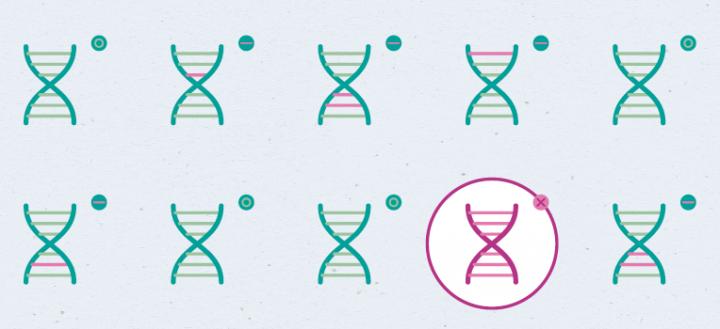
Aleksey V. Belikov, a scientist from the MIPT Laboratory of Innovative Medicine and Agrobiotechnology, used the publicly available data on 20 million cancer cases and examined 16 probability distributions, finding that the incidence of 20 most prevalent cancer types in relation to patients’ age closely follows the Erlang probability distribution, which is widely used in telecommunications for incoming call simulations. Notably, it is the only probability distribution that describes the waiting time for several random events, such as DNA mutations. Source: MIPT Press Office
A scientist from the Moscow Institute of Physics and Technology (MIPT) has proposed a model that can predict the number of key carcinogenic events for each cancer type based on the relationship between morbidity and age. The results of his study were published in the prestigious journal Scientific Reports.
The progression from one carcinogenesis stage to another is defined by “driver” mutations in crucial genes, which cause the cell to acquire oncogenic properties such as the capacity for accelerated division and apoptosis resistance. Medical statistics show that oncological morbidity and mortality increase with age because carcinogenesis is driven by the accumulation of several consecutive mutations in the DNA. At the same time, the incidence rates for at least some subtypes of cancer can not only increase but also decrease with age, and this fact cannot be explained in terms of classical oncology. Many complicated carcinogenesis models involving a variety of assumptions and parameters have been proposed, but none of them provides a way to accurately predict the number of key mutations in a given type of cancer. So how can a geneticist determine whether a patient is close to accumulating a critical quantity of mutations and if there is a high risk for them to develop cancer?
Aleksey V. Belikov, a scientist from the MIPT Laboratory of Innovative Medicine and Agrobiotechnology, used the publicly available data on 20 million cancer cases and examined 16 probability distributions, finding that the incidence of 20 most prevalent cancer types in relation to patients’ age closely follows the Erlang probability distribution, which is widely used in telecommunications for incoming call simulations. Notably, it is the only probability distribution that describes the waiting time for several random events, such as DNA mutations.
“A unique feature of the model is that it considers the random nature of mutations and allows to predict the number of key mutations required for the carcinogenesis process,” says Belikov.
The proposed theory allows to predict the number of carcinogenesis stages for any subtype of cancer with available statistics on age-dependent incidence. This method can help scientists to identify the driver mutations associated with different subtypes of cancer. In the future, it may find utility in clinical practice as well. For instance, a geneticist will be able to find out a patient’s cancer risk by studying the number of driver mutations identified by DNA analysis




